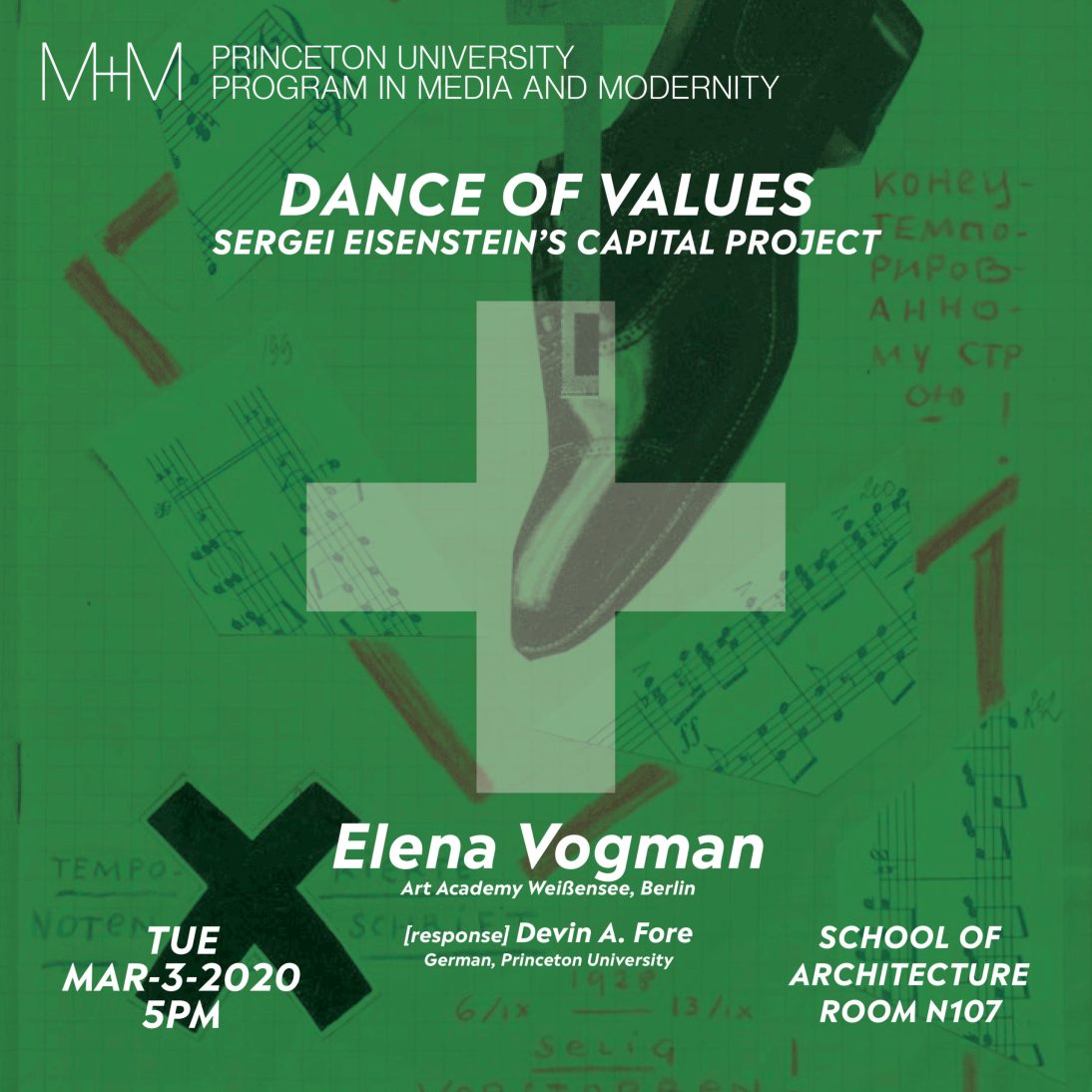Sprache
Typ
- Buch (6)
- Wissenschaftlicher Artikel (2)
- Interview (0)
- Video (0)
- Audio (0)
- Veranstaltung (0)
- Autoreninfo (0)
Zugang
Format
Kategorien
Zeitlich
Geographisch
User account
M+M Program in Media and Modernity: Elena Vogman, “Dance of Values”
03.03.2020, 17:00
Princeton University – School of Architecture – Room N107, 08544 Princeton, NJ

M+M Program in Media and Modernity presents:
Elena Vogman
“Dance of Values: Sergei Eisenstein’s Capital Project”
[response by Devin A. Fore]
Sergei Eisenstein’s planned film adaptation of Karl Marx’s Capital stands as one of the most enigmatic projects in the history of cinema. Though never realized, it has haunted the imagination of many filmmakers, historians, and philosophers to the present day. A recent look into Eisenstein’s archive revealed the full scope of his plans: between October 1927 and September 1928, he gradually transformed his working diaries into an editing board. This “visual instruction in the dialectical method,” as Eisenstein himself called his project, comprises over 500 pages of notes, drawings, press clippings, expression diagrams, plans for articles, negatives from October, theoretical reflections and extensive quotations. What can be seen and read is not a film but a series of variations on the themes of economy and capitalist exploitation.
Elena Vogman’s recent book Dance of Values: Sergei Eisenstein’s Capital Project explores the internal formal necessity underlying the director’s choices, arguing that Capital’s visual complexity as well as its epistemic efficacy resides precisely within the state of its material: the dance of heterogeneous themes and disparate fragments, a non-linear, provisory, and non-articulated flow. In this way Eisenstein’s montage sequences produce a kind of surplus value entirely their own: a semiotic excess, which stirs the materials and represented bodies into a dance analogous to Marx’s “dance” of “petrified conditions.” It is in this polymorphic and “diffuse” language—associated with the stream of consciousness of Joyce's Ulysses—that Eisenstein saw the strongest critical and affective potential for the future cinema.
With Elena Vogamn and Devin A. Fore, Professor of German in the German Department at Princeton University.
Elena Vogman
is an author, scholar of comparative literature and media, and curator. She wrote her dissertation on “Sensuous Thinking: Eisenstein’s Eccentric Method” and held postdoctoral research positions in the DFG-project “Rhythm and Projection” at the Institute of General and Comparative Literature at Free University in Berlin and at IKKM, Bauhaus University, Weimar. She currently teaches Media History and Theory at the Art Academy Berlin Weißensee and is working on a new project titled “Madness, Media, Milieus: Reconfiguring the Humanities in Postwar Europe.” She has published numerous articles on forms of visual thinking and montage, anthropology of rhythm and media, and milieus in practices of Institutional Psychotherapy. Together with Marie Rebecchi she curated the exhibition on “Sergei Eisenstein: The Anthropology of Rhythm” at Nomas Foundation, Rome.